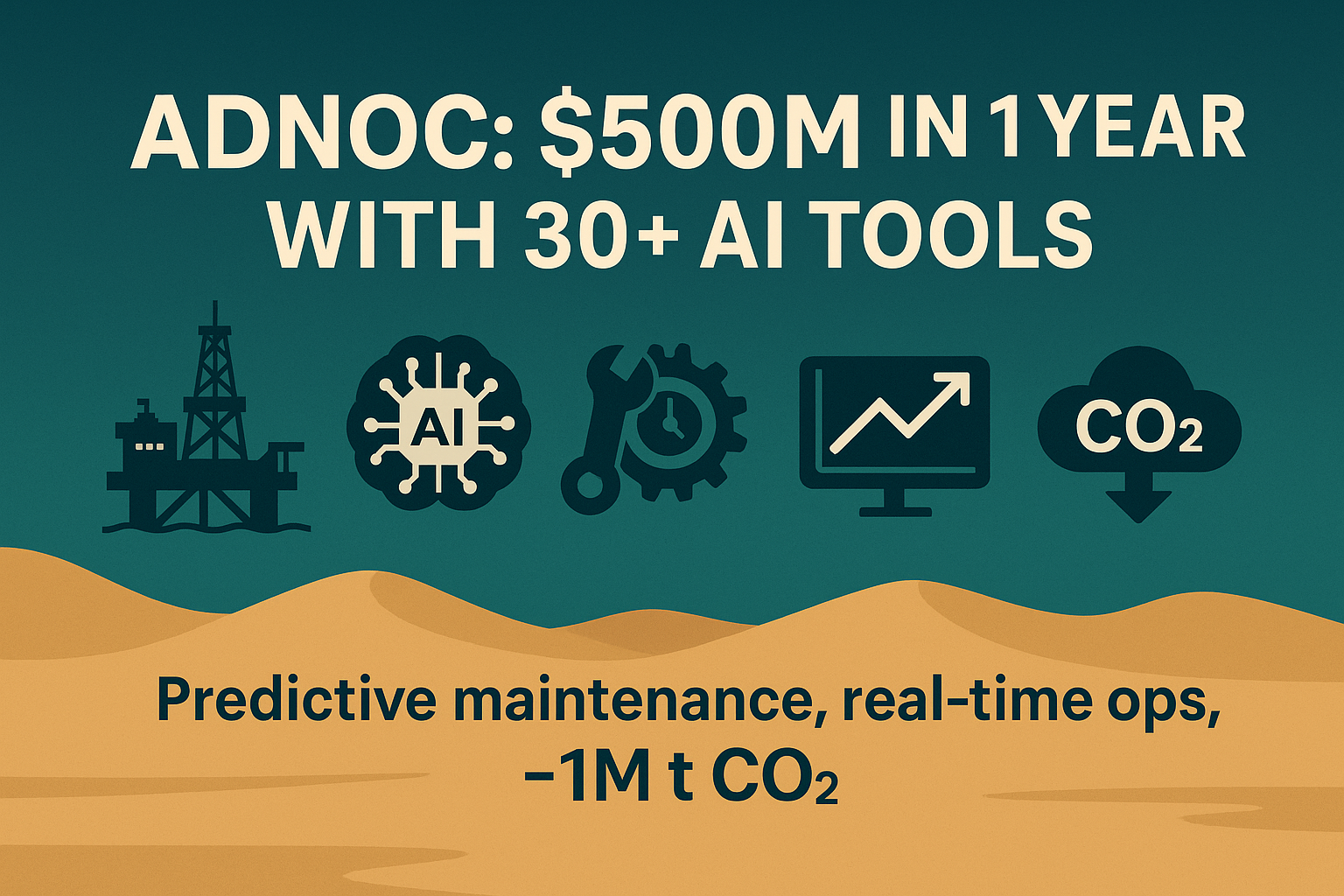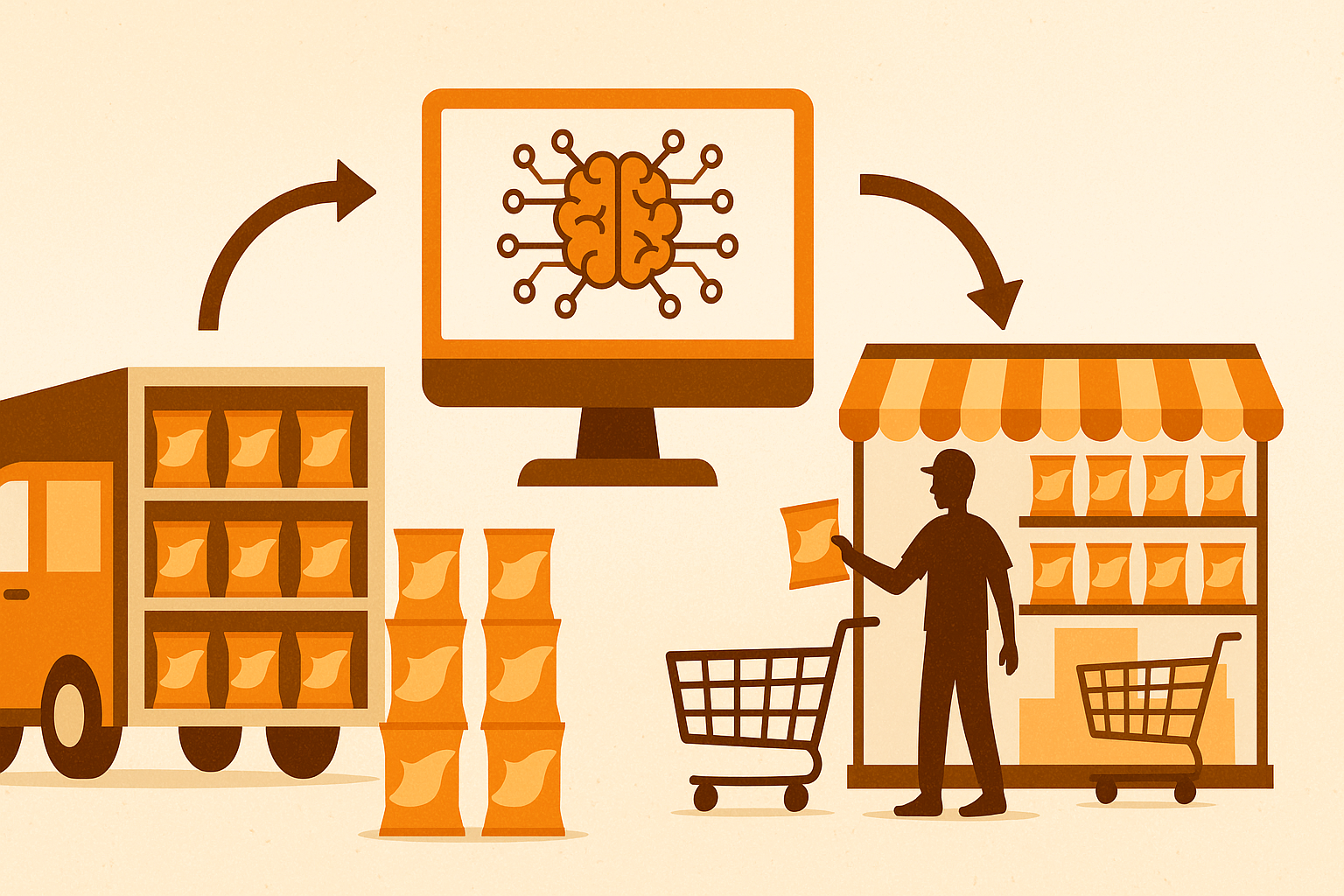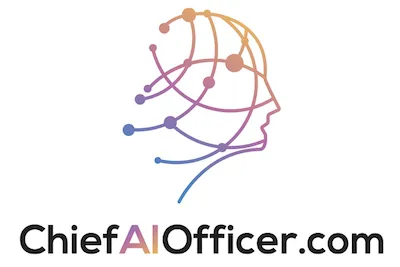Oil companies aren’t supposed to be AI innovation leaders. They’re supposed to be slow-moving industrial giants still running operations on decades-old systems, resistant to change, and focused exclusively on extraction economics.
ADNOC generated $500 million in additional value in a single year by deploying over 30 AI tools across their entire value chain. They simultaneously reduced carbon emissions by 1 million tonnes. And they did this while most energy companies were still forming committees to discuss maybe possibly considering AI pilots.
The kicker? This wasn’t about replacing workers with algorithms. It was about fixing a problem that’s plagued industrial operations since the dawn of mechanization: equipment breaks at the worst possible times, and by the time you know something’s wrong, you’ve already lost millions.
The Unplanned Shutdown Economics
Here’s what an unplanned shutdown costs in oil and gas operations: production stops immediately, emergency response teams mobilize, maintenance crews work around the clock at premium rates, and lost production runs into millions of dollars per day. A single critical pump failure can cascade into facility-wide shutdowns affecting dozens of wells.
The traditional approach to preventing shutdowns relies on scheduled maintenance and human monitoring. Inspect equipment every X hours of operation. Replace components on fixed schedules. Have operators watch gauges and listen for unusual sounds. This prevents some failures but misses others entirely because equipment doesn’t fail on predictable schedules.
A bearing might operate normally for 10,000 hours then deteriorate rapidly over the next 100 hours. A valve seal might show no visible wear until the day it catastrophically fails. Corrosion progresses invisibly inside pipes until leaks appear. Traditional monitoring catches problems after they’ve already started causing operational issues.
The economic reality is brutal: reactive maintenance costs 3-5 times more than predictive maintenance because you’re paying emergency rates, dealing with collateral damage, and losing production revenue. Yet most industrial facilities still operate primarily in reactive mode because they lack the data infrastructure to predict failures before they happen.
ADNOC faced this same problem at massive scale. They operate offshore platforms, onshore production facilities, refineries, and petrochemical plants across the UAE. Thousands of critical assets requiring monitoring. Any one of them could trigger cascading failures affecting multiple facilities.
The Predictive Analytics Revolution
ADNOC’s solution started with instrumenting critical equipment with sensors capturing real-time operational data: vibration patterns, temperature fluctuations, pressure variations, flow rates, and dozens of other parameters that indicate equipment health. This generated massive datasets that would be worthless without AI systems capable of identifying failure patterns before human operators could recognize them.
The AI models analyze historical failure data to learn what normal operation looks like for each piece of equipment, then continuously monitor for deviations from normal patterns that predict impending failures. A pump might show vibration patterns that look normal to human operators but that the AI recognizes as early indicators of bearing wear based on analyzing thousands of previous bearing failures across similar equipment.
The system doesn’t just flag potential problems. It predicts time-to-failure with enough accuracy that maintenance teams can schedule interventions during planned downtime rather than responding to emergency shutdowns. A valve showing early signs of seal degradation gets replaced during a scheduled maintenance window rather than failing mid-operation and triggering facility-wide shutdowns.
The practical impact shows up in dramatically reduced unplanned downtime. Equipment failures that used to surprise operations teams now get predicted days or weeks in advance. Maintenance crews shift from reactive firefighting to proactive scheduling. Emergency maintenance drops while planned maintenance increases, flipping the cost structure from expensive reactive repairs to cheaper preventive interventions.
I’ve watched similar transformations in manufacturing environments where predictive maintenance reduced unplanned downtime by 40-50% while cutting maintenance costs by 25-30%. The AI doesn’t eliminate equipment failures. It converts surprise failures into scheduled maintenance events that happen at convenient times rather than the worst possible moments.
The Subsurface Intelligence Advantage
Oil reservoir management represents one of the most complex optimization problems in industrial operations. Engineers must decide where to drill, how fast to produce, how much water to inject for pressure maintenance, and when to implement enhanced recovery techniques. Each decision affects long-term reservoir performance in ways that won’t become apparent for years.
Traditional reservoir management relies on geological models built from limited data points (seismic surveys, well logs, and production history). These models help but leave enormous uncertainty about subsurface conditions between wells. You might have detailed data from wells spaced kilometers apart with limited understanding of what’s happening in between.
ADNOC’s AI systems integrate multiple data sources (seismic, well logs, production data, and pressure measurements) to create more accurate reservoir models. The algorithms identify patterns in the data that suggest previously unrecognized reservoir characteristics, helping engineers make better decisions about well placement and production strategies.
The system also optimizes production in real-time by analyzing current well performance against reservoir models and recommending adjustments to maximize recovery while maintaining reservoir pressure. A well producing below expectations might benefit from altered injection patterns in nearby wells. The AI can identify these opportunities faster than human engineers manually analyzing production data.
The financial impact comes from increased ultimate recovery from existing fields. If AI-guided production strategies increase lifetime oil recovery from a field by even 2-3%, that translates to billions of dollars in additional revenue from assets already in production. You’re not finding new oil. You’re extracting more of what you already discovered, dramatically improving returns on existing infrastructure investments.
The 30+ Tool Ecosystem
ADNOC didn’t deploy a single monolithic AI system. They deployed over 30 specialized tools, each targeting specific operational challenges across their value chain. This portfolio approach makes more sense than it might initially seem because different problems require different AI architectures and data inputs.
Emission X predicts emission sources using historical and real-time operational data, enabling proactive emissions management. Instead of discovering emissions after they’ve occurred, the system predicts conditions likely to cause emissions and alerts operators to intervene preventively. This helps ADNOC meet environmental regulations while avoiding the costs associated with emissions events.
SMARTi uses computer vision to detect safety hazards in operations. Cameras monitoring work sites feed images to AI models trained to recognize unsafe conditions: workers not wearing proper protective equipment, equipment positioned dangerously, or environmental hazards like gas leaks or oil spills. The system alerts supervisors immediately rather than waiting for human safety inspections to catch problems.
Robowell remotely operates equipment and flow valves, reducing costs and improving safety by eliminating the need for workers to physically access remote or hazardous locations. The system can adjust valve positions, monitor equipment status, and respond to changing conditions without requiring human intervention in potentially dangerous environments.
Centralized Predictive Analytics and Diagnostics (CPAD) consolidates operational intelligence from across facilities to reduce downtime and improve reliability. Rather than each facility operating independently, CPAD identifies patterns across the entire operation, allowing lessons learned at one facility to benefit others and enabling coordinated optimization across the value chain.
The portfolio approach allows ADNOC to match AI tools to specific problems rather than forcing every problem into a single AI framework. Some challenges require computer vision. Others need predictive analytics. Some benefit from optimization algorithms. The diversity of tools reflects the diversity of operational challenges in complex industrial operations.
The $500 Million Value Breakdown
The headline number deserves deeper examination because “value generated” can mean different things. ADNOC’s $500 million combines multiple value streams that AI tools enabled:
Reduced Unplanned Downtime: Predictive maintenance decreased unexpected equipment failures, eliminating millions in lost production and emergency maintenance costs. When critical equipment doesn’t fail unexpectedly, facilities maintain production schedules and avoid premium emergency repair rates.
Optimized Production: Better reservoir management and production optimization increased output from existing wells without requiring new drilling. Each percentage point improvement in recovery rates translates to millions in additional revenue from assets already producing.
Improved Maintenance Efficiency: Shifting from reactive to predictive maintenance reduced overall maintenance costs while improving equipment reliability. Scheduled maintenance costs less than emergency repairs, and better-maintained equipment operates more efficiently.
Enhanced Decision-Making: AI-powered analytics gave operations teams better information for real-time decisions, reducing costly mistakes and identifying opportunities human analysts would miss in massive datasets.
Safety Improvements: Fewer equipment failures and better hazard detection reduced accidents, lowering associated costs and avoiding production interruptions from safety incidents.
Emissions Reductions: Preventing emissions events avoided regulatory penalties and reduced the cost of carbon compliance as regulations tighten.
The value doesn’t come from a single dramatic improvement but from dozens of incremental gains across operations. A 2% improvement in equipment reliability here, a 3% increase in production efficiency there, a 15% reduction in maintenance costs somewhere else. These stack together into the $500 million total.
The Carbon Reduction Reality
ADNOC abated 1 million tonnes of CO₂ emissions between 2022 and 2023 through AI-powered optimization. This number matters more than it might initially appear because it demonstrates that operational efficiency and environmental performance align rather than conflict.
Traditional thinking treats environmental performance as a cost center requiring trade-offs against operational efficiency. Reducing emissions means installing expensive equipment, slowing production, or accepting lower yields. AI-powered optimization reveals that many emission sources result from operational inefficiencies that also hurt financial performance.
Flaring natural gas (burning it off rather than capturing it) wastes valuable product while generating emissions. AI systems that optimize production reduce unnecessary flaring, simultaneously cutting emissions and capturing product that can be sold. Equipment leaks release methane while indicating maintenance problems that affect performance. Detecting and fixing leaks reduces emissions and improves operational efficiency.
Energy waste in operations generates both emissions and unnecessary costs. AI-powered energy management reduces power consumption, cutting both electricity costs and the associated emissions from power generation. Process optimization that reduces waste streams often reduces both environmental impact and raw material costs.
The 1 million tonnes represents emission reductions that improved rather than harmed operational performance. ADNOC didn’t sacrifice $500 million in value to achieve carbon reductions. The same optimization driving financial returns also drove emissions reductions because inefficiency manifests as both wasted resources and environmental impact.
The Implementation Timeline Reality
Deploying 30+ AI tools across complex industrial operations doesn’t happen overnight. ADNOC’s transformation likely spanned 3-5 years from initial pilots to the mature deployment generating $500 million annually. Understanding this timeline matters because it highlights the sustained commitment required for AI transformation at scale.
Early pilots focused on proving AI value in controlled environments with limited scope. A predictive maintenance system might monitor a single critical pump, demonstrating that AI could predict failures before they occurred. Success in pilots justified expanding to broader deployments monitoring multiple assets.
Scaling from pilots to production required significant infrastructure investment: sensors for data collection, network connectivity to transmit data from remote facilities, data storage and processing systems, and integration with existing operational technology platforms. This infrastructure investment happened incrementally as proven value justified continued investment.
Team training represented another major effort. Operations personnel needed to understand how to interpret AI recommendations, maintenance teams required new workflows for predictive rather than reactive maintenance, and engineers learned to leverage AI insights for better decision-making. This cultural change took years, not months.
The $500 million annual value represents the mature steady-state performance after years of implementation effort. Early returns were likely much smaller as systems were still being refined and teams were still learning new workflows. The investment curve looked like significant costs upfront with returns growing over time as capabilities matured.
The Proprietary Advantage Building
ADNOC didn’t just license commercial AI tools. They developed proprietary systems like Emission X, SMARTi, Robowell, and CPAD specifically tailored to their operations. This creates advantages that competitors can’t easily replicate by simply buying off-the-shelf AI products.
Proprietary tools trained on ADNOC’s operational data become increasingly effective over time as they accumulate more training examples. A predictive maintenance system learns from every equipment failure it encounters, improving its predictions for future failures. This creates a compounding knowledge advantage that grows with each year of operation.
The systems also encode operational knowledge specific to ADNOC’s facilities, equipment, and processes. Generic commercial AI tools optimize for average industrial operations. ADNOC’s custom tools optimize for their specific environment, potentially finding opportunities that generic tools would miss because they’re tuned for different operational contexts.
Competitors watching ADNOC’s success face a catch-22: They need AI capabilities to remain competitive, but deploying similar systems requires years of implementation effort and accumulated training data. Even if competitors start today with the same technology, ADNOC’s 3-5 year head start represents a significant advantage in AI maturity and accumulated operational learning.
The Human-AI Operational Model
The success of ADNOC’s AI deployment required getting the human-AI collaboration right. AI systems generate predictions and recommendations, but human operators and engineers make final decisions about operational changes. This division of responsibilities proves critical in industrial environments where incorrect decisions can have severe safety and financial consequences.
AI excels at analyzing massive datasets to identify patterns humans would miss, but lacks the contextual understanding of experienced operators. A predictive maintenance system might flag a pump for potential failure based on vibration data, but experienced maintenance engineers consider factors the AI doesn’t capture: recent maintenance history, upcoming planned shutdowns, availability of replacement parts, and workload of maintenance crews.
The most effective deployments treat AI as decision support rather than decision automation. The AI surfaces relevant information and makes recommendations, then human experts apply judgment informed by years of operational experience. This hybrid approach combines AI’s analytical capabilities with human expertise and contextual awareness.
Teams that successfully adopted this model reported working smarter rather than being replaced. Engineers spend less time manually analyzing data and more time making strategic decisions informed by AI insights. Maintenance teams spend less time responding to emergencies and more time on planned preventive work that’s safer and more effective.
The Competitive Pressure Building
ADNOC’s public disclosure of their AI success creates pressure across the energy industry. Competitors now know that AI deployment can generate returns measured in hundreds of millions annually while simultaneously achieving environmental goals. The strategic question shifts from “does AI work in energy operations?” to “how quickly can we catch up?”
Energy companies lagging in AI adoption face mounting disadvantages. ADNOC’s predictive maintenance reduces their costs while competitors pay premium rates for emergency repairs. ADNOC’s production optimization increases their yield from existing assets while competitors leave value underground. ADNOC’s emissions management reduces their regulatory risk while competitors face increasing carbon compliance costs.
The challenge for followers is that ADNOC’s advantages compound over time. Each year of AI operation generates more training data, making their systems more accurate. Each successful deployment builds organizational expertise in AI implementation. Each process improvement creates operational efficiencies that fund further AI investment.
National oil companies competing with ADNOC in global markets face particular pressure because ADNOC’s cost advantages and operational efficiencies affect their competitive position in export markets. International oil companies face pressure from investors demanding similar digital transformation and emissions reductions.
The Technology Stack Reality
The AI tools ADNOC deployed don’t run in isolation. They require substantial supporting infrastructure that represents significant investment beyond the AI algorithms themselves:
Sensor Networks: Thousands of sensors capturing real-time operational data across facilities, requiring installation, calibration, and ongoing maintenance.
Communication Infrastructure: Networks transmitting sensor data from remote locations (offshore platforms, desert facilities) to central processing systems, often requiring new fiber optic or wireless connectivity.
Data Storage and Processing: Systems capable of storing and analyzing massive time-series datasets generated by continuous sensor monitoring across facilities.
Integration Layers: Connections between AI systems and existing operational technology platforms, allowing AI recommendations to inform control systems and operational workflows.
Cybersecurity: Protection for AI systems and the operational technology they integrate with, critical in energy infrastructure that could be targeted by nation-state actors.
The technology investment likely exceeded the costs of the AI tools themselves. Building the data infrastructure enabling AI deployment required substantial capital investment that took years to complete. Companies attempting similar transformations need to plan for this infrastructure investment rather than just the AI software costs.
The Risk Management Framework
Deploying AI in critical industrial operations requires careful risk management because AI mistakes can have severe consequences. A false positive in predictive maintenance wastes money on unnecessary repairs. A false negative allows equipment to fail unexpectedly. An incorrect production optimization recommendation could damage reservoirs or equipment.
ADNOC likely implemented multiple safety layers to manage AI-related risks:
Human-in-the-Loop: AI systems make recommendations but humans authorize significant operational changes, providing oversight that catches AI errors before they cause problems.
Conservative Thresholds: AI alerts trigger at conservative levels, accepting some false positives to avoid missing true equipment failures that could cause shutdowns or safety incidents.
Gradual Rollout: New AI tools start with limited scope and expand as they prove reliable, avoiding facility-wide impacts from immature systems.
Continuous Monitoring: AI system performance gets tracked continuously, with alerts if prediction accuracy degrades or unusual patterns emerge suggesting the AI is encountering situations outside its training data.
Fallback Procedures: Operators can override AI recommendations and revert to manual control if AI systems behave unexpectedly, ensuring that AI failures don’t compromise operational safety.
This risk management framework allows ADNOC to capture AI benefits while managing downside risks inherent in deploying AI in high-stakes industrial environments. The framework probably evolved over years as ADNOC learned which AI recommendations to trust and which required additional human oversight.
What This Means for Industrial AI
ADNOC’s success provides a template for AI deployment in heavy industry beyond just oil and gas. The core challenges they solved (predicting equipment failures, optimizing complex operations, reducing environmental impact) exist across manufacturing, utilities, mining, and other industrial sectors.
The financial returns demonstrate that industrial AI isn’t experimental technology with uncertain payoffs. It’s production-ready capability delivering measurable returns within years of deployment. The $500 million value from one company in one year suggests industry-wide potential measured in tens of billions annually.
The emissions reductions prove that operational efficiency and environmental performance align when properly optimized. Industries facing increasing pressure to reduce carbon footprints can use AI to achieve environmental goals while improving rather than harming financial performance.
The portfolio approach (30+ specialized tools rather than a single system) suggests successful industrial AI requires matching diverse tools to diverse problems. Companies need to build AI capabilities across multiple use cases rather than searching for a single platform that solves everything.
Your Strategic Response Path
For companies in heavy industry, ADNOC’s results create urgency around AI adoption. The companies that begin serious implementations in 2025 will have mature, value-generating AI systems by 2027-2028. Those still forming committees to study the question will be explaining competitive disadvantages to their boards.
Start with high-value use cases where AI impact is most measurable: predictive maintenance for critical equipment, production optimization for key processes, or energy management for major facilities. These use cases generate clear financial returns that justify expanding AI investment to additional applications.
Invest in the data infrastructure enabling AI before obsessing over which specific AI tools to deploy. Without sensor networks, data transmission, and processing systems, even the best AI algorithms are useless. The infrastructure enables multiple AI applications over time, while jumping directly to AI without infrastructure leads to pilot projects that never scale.
Build internal AI expertise through training and hiring rather than relying entirely on external vendors. The operational knowledge required to deploy AI effectively in industrial environments doesn’t exist in pure technology companies. You need people who understand both AI capabilities and industrial operations.
Plan for multi-year transformation rather than expecting quick wins. ADNOC’s $500 million annual value came after years of implementation effort. Early returns will be smaller as systems mature and teams learn new workflows. Companies that persist through the learning phase build compounding advantages over time.
The Future of Industrial Operations
Industrial operations are shifting from reactive management to predictive optimization. The companies that understand this transition and invest accordingly will dominate their industries. Those that continue optimizing traditional approaches will find themselves permanently disadvantaged by competitors operating with fundamentally different cost structures and capabilities.
ADNOC proved that AI in heavy industry isn’t theoretical. It’s operational reality delivering measurable financial and environmental returns. The question isn’t whether AI will transform industrial operations. It’s whether your company will lead or follow in this transformation.
Generating $500 million in a single year while cutting 1 million tonnes of emissions isn’t just an impressive achievement. It’s proof that the future of industrial operations has already begun.




